This morning I met up with Bill McDaniel, park manager, and Intern, Josh Helcel. Bill drove us to the mouth of Tobacco Creek where nest boxes 5 & 6 were attached. Box five was placed on a pecan and box six on a cedar elm in a nice grove of trees located on a terrace along the Pedernales River.
We drove on to the East Park Boundary and hiked down to the Pedernales River. Bill had the suggestion of placing this pair of boxes on cypress trees along the edge or in the river. Box 10 went on a tree out on a narrow island and box 9 on the south shore of the river. This site will be a good experiment because Prothonotary's prefer to nest over water, and it is the most isolated location of all five sites.
With all ten nest boxes placed I then proceeded to check on the other six boxes. Though it is early for Prothonotary Warblers to return I did hear and see male Golden-cheeked Warblers at Twin Falls and the Hackenburg sites. No bird species were seen frequenting any of the existing nest boxes.
At 1 PM I sat myself down at Hackenburg Creek and began writing up my notes. Within 10 minutes I heard and saw two Ringed Kingfishers fly over the river. It was a beautiful, but windy overcast day at the park. A perfect day to hang out and enjoy nature.
Prothonotary Warbler Occurrence In Texas
Central Texas draws the western line for the Prothonotary Warbler range. This species occupies much of eastern North America up to the southern boarder of Ontario Canada.
Prothonotarys' nest in natural cavities but also readily use nest boxes located on or near water. Flooded swamps represent ideal habitat but they will also nest along rivers or small bodies of water.
In May 2007 I saw a brightly colored male Prothonotary Warbler at Pedernales Falls State Park bird blind. After some research I learned male birds have been seen building nests in neighboring counties to Blanco County. Further research revealed a pair of Prothonotary Warblers successfully nested at Heard Wildlife Sanctuary in McKinney, Texas.
In December 2007 I decided to undertake a nest box study at the park. January through February 2008 I hiked the entire Pedernales River and tributaries within park boundaries, in an effort to choose the best sites. Habitat selection proved a challenge do to high flood levels along the river.
Five sights were eventually selected where two nest boxes each were placed. Most boxes were attached to trees however two were attached to metal poles. These boxes were monitored from March through June 2008 on a weekly basis. A Breeding Bird Study was conducted at each nestbox location in 2008 and will be continued in 2009.
Prothonotarys' nest in natural cavities but also readily use nest boxes located on or near water. Flooded swamps represent ideal habitat but they will also nest along rivers or small bodies of water.
In May 2007 I saw a brightly colored male Prothonotary Warbler at Pedernales Falls State Park bird blind. After some research I learned male birds have been seen building nests in neighboring counties to Blanco County. Further research revealed a pair of Prothonotary Warblers successfully nested at Heard Wildlife Sanctuary in McKinney, Texas.
In December 2007 I decided to undertake a nest box study at the park. January through February 2008 I hiked the entire Pedernales River and tributaries within park boundaries, in an effort to choose the best sites. Habitat selection proved a challenge do to high flood levels along the river.
Five sights were eventually selected where two nest boxes each were placed. Most boxes were attached to trees however two were attached to metal poles. These boxes were monitored from March through June 2008 on a weekly basis. A Breeding Bird Study was conducted at each nestbox location in 2008 and will be continued in 2009.
Sunday, March 2, 2008
Subscribe to:
Post Comments (Atom)

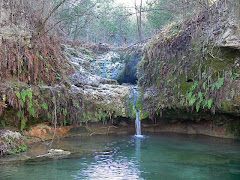
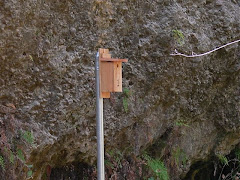
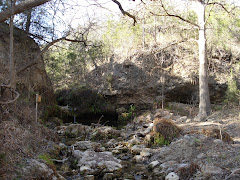
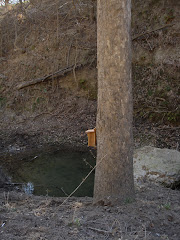
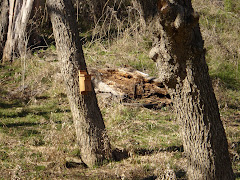




1 comment:
How beautiful - the scene of Twin Falls. It looks quite an isolated area. We seem to have fewer sightings of smaller birds in our area than we used to have and it has been many years since I have seen long-tailed tits. Your blog is very interesting.
Post a Comment